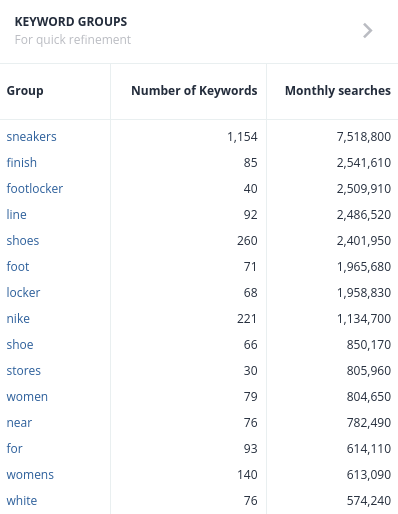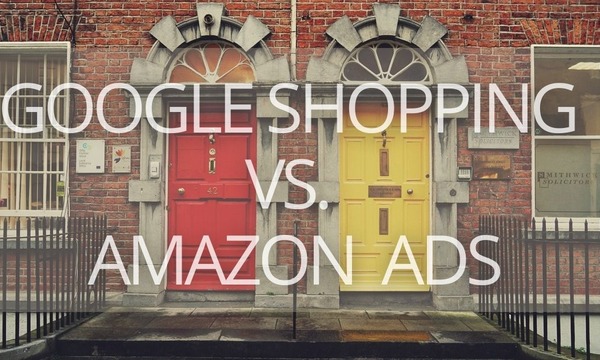The way that Google Search Ads targeting is being done has been changing dramatically during the past year. This is mostly due to the arrival of advanced AI algorithms based on Machine Learning technology. Intent signals and broad keyword bidding has become very prominent.
Now, Google will typically recommend their own keywords based on crawling the domain and landing pages. However, in this article we will explain why keyword research is still very important as Google’s goals do not equal the goals of advertisers. We will also explore 2 effective tactics to mine, cluster keywords, and the purpose of Competitive Analysis for these approaches.
Google’s Goals Don’t Always Align with Advertiser Goals
You see, maximizing the profits of advertisers is only a secondary goal for Google. While advertiser profits are important to make sure the advertiser is willing to keep investing in Google, the primary goal for Google is to increase its own revenue. While Google keeps getting better in identifying high intent searches and thus improving the conversion rates for their clients (the advertisers), and in correlation, the CPC price charged also increases. According to the latest Merkel CPC benchmark report Q3 2021, CPC prices have increased by 28% in the last year alone. Therefore, improvements in Machine Learning technology do not necessarily mean that results for the advertiser will be better, and, at the same time, the traffic will be more relevant and more expensive.
In addition to that, Machine learning works like a black box. The algorithm uses raw unprocessed big data and tries to recognize patterns or intrinsic structures within the data and draws inferences from that data. The output is typically just determining if the “win-condition” was met. In the event that the conversion rate gets better, there is a “win”, so the next iteration of the algorithm will be more similar to the winning model. This black box model makes it very difficult for advertisers to assess whether Google worked in their interest, especially since Google does not only apply machine learning to improve campaign optimization, but also uses it to determine the result output, which is the case when using Data-driven attribution.
While Google always needs to ensure that the advertisers are “happy enough” to keep investing their advertising budgets into Google (rather than for example shifting them to Meta or Amazon), Google may have an interest to explore other ways to maximize their revenue in both the long-term and short-term.
For example, having advertisers bid on non-profitable keywords may be bad for the advertiser, but may benefit Google in the long-term as they can use that data to train the algorithms to understand the data better.
In general, advertisers must not fall into the trap that Google is at any cost taking their best interests at heart. One basic conflict of interest is already advertisers vs the users that browse Google. While advertisers want to push their products and services, the user cares about solving their issue and doesn’t want to be annoyed by ads, so Google will put limits on advertisers to show relevant content and may choose not to show ads at all for specific queries.
Furthermore, Google’s vision is often remembered as “Don’t do evil”. However, there have been clear cases where business goals have overwritten this noble purpose. Once again, this was also painfully discovered following the recent revelations in the “Blue Jedi” scandal, where Google and Facebook teamed up to kill competing “header bidding marketing” by manipulating the prices.
Key take-away from this: It is important to stay skeptical about Google’s recommendations and think from the perspective of the advertiser, rather than just applying the best practices preached by Google.
This applies to mining keywords as well. The keywords that Google suggests may often be the most relevant (which Google likes for it’s users), but may also be very competitive or show strong cannibalism with the organic SEO keywords as they are overlapping.
This is why it is always important to do your own keyword research!
Keywords Are Here to Stay
The single biggest contributor to Google’s financial success has been the invention of keyword targeting. Keywords are immensely powerful in understanding what the visitor wants to see / know / have. Not because they fit a certain profile, demographic or cookie profile, but simply because they are telling. “Hairdresser paris” — this person wants a haircut, “online business loan” — the person wants to borrow money for his company. It doesn’t matter what other intent signals are given, the intention is clearly defined in the search query.
There is little reason to assume that Google would like to get rid of this valuable data. It helps advertisers reach their goals and it also helps Google understand the profile of their clients better, as crawling a website only gives limited information, especially in the case of new innovative products.
That said, Google is likely to have an interest in widening the scope of keyword matching. A wider scope frees up data for algorithms to analyze other intent signals. This widening keyword trend makes it necessary to keep reviewing the accuracy of the keyword / query matching.
7 Ways to Find the Best PPC Keywords [Guide to PPC Keyword Research]
Stricter Privacy Laws Restrict Third-Party Data
While Google would love to put more emphasis on intent signals, their ability to do so is being continuously restricted in the form of increased privacy regulation. Third-party cookies are disappearing. Users are becoming more aware of their privacy rights, cookie consent is needed, operating systems like IOS are blocking third-party cookies by default and other forms of data transfer, GDPR laws are getting stricter and the laws are being continuously enforced more strictly. All these trends mean that Google will have to continue to rely on first-party signals, of which search keywords are the main contextual ones.
Here is what we advise you do:
Get Inspiration from the Competition
It is a common practice for most business owners to keep a close eye on the competition. In general, that is a smart thing to do as the business needs to find its place amongst the competitors. In PPC management, there is a common misconception that the competitors know what they are doing (which, frankly, is often not the case). However, there is also much to learn from the mistakes competitors are making.
PromoNavi has a powerful tool that crawls competitor domains to see what search queries they are actually appearing on, what are the ads and landing pages used in the ad, and how they relate with other competitors. In addition, the tool shows which Display ads are being used for both HTML5 and static formats.
It is extremely useful to export those keywords, find gaps in their strategy, and capitalize on those keywords. More often than not, it is visible that these competitors are actually appearing on ads they shouldn’t appear on due to the usage of broad keywords. For example, the keyword “hairdresser” may trigger the phrase “how to become a hairdresser” and the “loan” keyword may trigger on “loan a lawnmower.”
Keyword Mining Should Be Thematic
While huge lists of thousands of keywords are becoming less relevant, it is still important to get a thorough overview of the range of potential queries with which your keywords could match. Grouping keywords in themes helps a lot to accomplish this:
- Clustered keyword grouping helps to uncover new topics. Google likes it when websites and landing pages are centered around a generic theme, rather than around a single keyword. Keyword grouping helps to identify main themes and allows you to compare volumes across themes.
- Discover keyword niches. Grouping keywords by theme is a great way to discover branches of a keyword. 1-tail keywords are very non-intuitive.
- Find negative keywords. Keyword grouping is a great way to find negative keywords. Firstly, it allows you to identify branches of the keyword that are not commercially interesting, but in addition, it allows you to expand that list and extract all the related negatives in order to upload those to google. Remember, Google basically only has exact phrases, the broad negative keyword “sneaker” will not even block “sneakers”, so it is important to add all negative variations, plurals and common misspellings.
- Get an accurate view on volumes: Especially when looking at long-tail keywords, there are many keywords that will have extremely low volumes. However, when combining keywords into groups, you have the option to compare traffic volumes per group, giving a more accurate idea of the actual volumes of that theme.
Here is an example of keyword grouping using the PromoNavi Keyword Planner, keyword “sneakers:”
In this example:
- The theme “white” could be an interesting topic to build content around (cleaning white sneakers, top crystal white sneaker models) or separate into its own campaign with its own ads and keywords.
- Footlocker and Finish Line could go into a competitor retailer campaign.
- Nike could go into a competitive brand campaign.
- Stores could be added as a negative in case the shop promoted is an online shop. The same goes for near. These individual keywords can be extracted and bulk uploaded as negative keyword lists.
- The grouped keywords clearly show that there is greater volume in the “sneaker” theme, even though traffic analysis of individual keywords would have shown a much lower volume.
Therefore, keyword grouping enables you to quickly find ideas on how to target your customers. With PromoNavi, this process becomes effortless, so that you can focus on the strategy instead of routine tasks.




